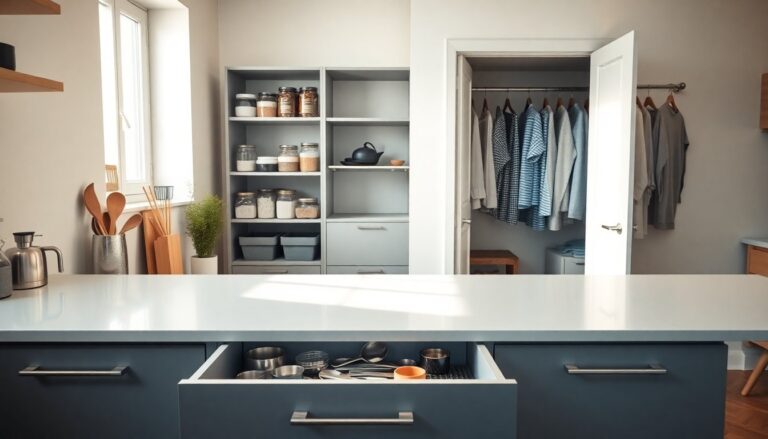Argomenti trattati
Many individuals face the common challenge of inadequate storage. Often, the issue lies not in the absence of space but in the accumulation of seldom-used items. For example, a kitchen drawer may overflow with cookie cutters that go unused. Similar situations can be found in linen closets and wardrobes, where extra items occupy valuable space.
Beyond physical clutter, excess items can affect mental clarity. According to professional organizer Bridget Urgo, co-founder of The Settler, clutter can significantly burden the mind. “People often underestimate how much unnecessary items weigh them down,” she states. Decluttering not only simplifies the search for essentials but also clears the mind and reduces unnecessary spending on duplicates.
Items to consider purging
Vases often accumulate after receiving flowers and are frequently tucked away in cabinets. As Maura Fitzgerald, founder of Fitz Just Right, notes, individuals are likely to reach for their cherished wedding vase when arranging flowers. Donating extraneous vases makes sense; local florists may accept them.
Kitchen gadgets and appliances
Kitchens are notorious for clutter. Many households possess specialized gadgets, such as apple corers or mango slicers, which occupy valuable drawer space. Instead of holding onto these items, Urgo recommends using a simple knife. Additionally, trendy appliances like Instant Pots or high-end blenders often go unused, with many collecting dust. Consider donating or discarding appliances that no longer serve a purpose. Some libraries even allow members to rent kitchen gadgets, making it worthwhile to inquire about donating unused items.
Digital clutter and old electronics
Technology also contributes to clutter with outdated electronics. Many individuals have drawers filled with old phones, laptops, and tangled cords, often retained for “just in case.” It is crucial to part ways with these items. Before discarding any device, ensure personal information is wiped, as advised by Urgo. After this, consider recycling or selling them back to manufacturers, which may offer credit toward new devices.
Papers and sentimental items
Paper clutter, including old receipts, tax documents, and children’s artwork, can accumulate rapidly. Organizing expert Nikki Boyd emphasizes the importance of curating children’s art. Encourage children to select their favorite pieces to keep. For the remainder, photograph and save them digitally, allowing for decluttering while preserving memories. Fitzgerald suggests that appliance manuals can often be found online, reducing the need to keep physical copies.
Gift supplies and wrapping materials
Many homes contain extensive collections of gift supplies, including wrapping paper and bows. Shira Gill, author of *Minimalista*, frequently encounters closets overflowing with these items. She advocates for establishing a dedicated space for gift supplies and limiting inventory to what can comfortably fit in that area. This strategy helps maintain organization and prevents unnecessary accumulation.
Old toys and expired products
As children grow, they often leave behind old toys, worn-out sports equipment, and expired craft supplies. Urgo recommends a straightforward rule: if you do not use or consume it, dispose of it. This includes checking for expired food items and beauty products—mascara, for example, should be replaced every few months. Additionally, old paint cans should be inspected for expiration, with any unusable paint disposed of through proper recycling channels.
Creating a clutter-free environment
A critical examination of belongings may reveal numerous items that no longer serve a purpose. From extra linens to unused kitchen gadgets, clutter can be overwhelming. Gill encourages individuals to evaluate the importance of their possessions. “Why store precious items in dusty corners?” she asks. Instead of hiding sentimental items, consider displaying them or transforming them into art. Fitzgerald suggests that using Grandma’s fine china daily elevates the ordinary and brings joy to everyday life.

